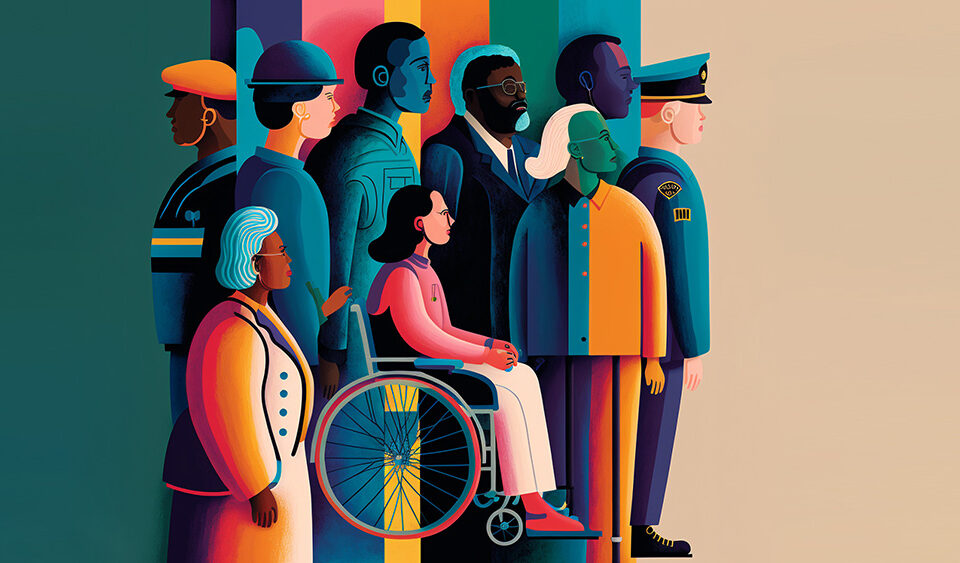
Diversity in the workplace is about more than just representation, it’s about creating a culture where all employees feel comfortable bringing their unique perspectives and experiences to the table. When we have a diverse workforce, we have a wider range of ideas, perspectives, and experiences that can lead to innovation and improved performance. This is particularly important in today’s global economy, where organisations compete worldwide and must be able to adapt to rapidly changing markets.
Ensuring inclusion is vital for fostering a culture where every employee feels esteemed and appreciated. This entails establishing an atmosphere where individuals feel at ease expressing their true identities in the workplace. When employees experience inclusion, they tend to be more involved, driven, and efficient. Conversely, feelings of exclusion can lead to disengagement, attrition, or even actions that undermine the company’s prosperity.
It’s also important to remember that DEI&B is not a one-time effort, it’s an ongoing journey that requires continuous improvement. It’s about creating a culture where differences are valued, and everyone can bring their whole selves to work. That’s when we’ll see true progress.
As we have established in previous articles, creating a diverse and inclusive workplace requires a lot of effort. It requires clear directions and relentless execution by management teams and also, result tracking. In order for companies to measure efforts taken towards DEI initiatives, companies must use Key Performance Indicators (KPIs) to track progress and results.
KPIs aren’t plucked out of thin air. KPIs should ideally be designed after analysing your company’s position on the DEI scale. How inclusive are you? Do you still place physical requirements for a position on your job ads? Do we still hold talent biases? Is there equity in our pay? Do we have room for EVERYONE to succeed and not just a few?
Answers to this question will determine where a company is on the DEI path.
HOW FAR HAVE WE COME?
The last 10 years have seen massive improvements in DEI adoption leading to the actualization of its initiatives. A ton of issues that birthed DEI initiatives have been largely achieved. Indices like;
- Female to male employment ratio
- Pay gaps
- Racial profiling
- Age representation
- Bias against people living with disabilities
- Restrictive opportunities to succeed etc
These initiatives, over the last 10 years, have largely been achieved. With companies both large and small pulling their weight. We have more female leadership in tech companies than ever before, a space that’s largely male dominated. The pay gap has largely improved as companies now focus on value rather than the physical makeup of the individual.

WHAT IS NEXT?
It is beyond brilliant how far we have come in the implementation of total DEI initiatives. While more work needs to be done across board for these primary initiatives, we must start looking into a new frontier for DEI initiatives. The goal of DEI is two-fold. The first one is to create a workplace where there is proper representation of all people AND an environment where everyone can be their true selves and succeed. While we have made great strides in the area of representation we must look forward to how we can create an environment that guarantees the success of people.
The next frontier in Diversity, Equity, and Inclusion (DEI) Key Performance Indicators (KPIs) involves evolving measurement approaches to capture a more comprehensive understanding of organisational inclusivity and equity. Here are some potential areas of focus for the next generation of DEI KPIs:
Belonging and Psychological Safety Metrics
Management must create a work environment that ensures physical and psychological safety for all employees. Do they feel psychologically distressed whenever they think about coming to work? This metric forces teams to gauge employee’s sense of safety and belonging in the workplace.
Partner Diversity Metrics
This metric goes beyond internal operations of the company. Companies must extend DEI initiatives to their partners and suppliers, ensuring that they help underrepresented businesses grow.
Promotion and Advancement Metrics
Companies must review career advancement opportunities within the organisation to ensure that there’s no hidden bias in the decision making. All career advancement and promotion opportunities should be made open to ALL and must be based on merit.
Metrics for the Neurodiverse
Experts believe that the next challenge for corporations is in the accommodation of clinical diagnosed neurodiverse individuals. How can corporate work be customised to suit their talent? Neurodivergence is a term used to describe variations in the human brain in the ways we think, learn, process, and behave. It includes conditions such as autism/Asperger, dyslexia, dyspraxia and attention deficit hyperactivity disorder (ADHD or ADD).
A large cultural shift is required to accommodate neurodivergent folks. Companies must track and measure progress in this endeavour.
Accessibility Metrics
Companies must ensure that office spaces are accessible to talents with disabilities. They must track accessibility features, make constant adjustments to the overall inclusivity of the workspace.
Community Engagement and Social Impact Metrics
What is the impact of the organisation on the community it serves? Companies should constantly reevaluate how they impact the communities that host them. In a bid to keep that mutual relationship and trust alive, companies must make it a practice to measure philanthropic initiatives, community outreach, and partnerships that contribute to positive social change.
These next-generation DEI KPIs aim to provide a more nuanced and holistic understanding of an organisation’s commitment to diversity, equity, and inclusion. Regularly reviewing and adapting these metrics will be essential to fostering continuous improvement in DEI efforts.


